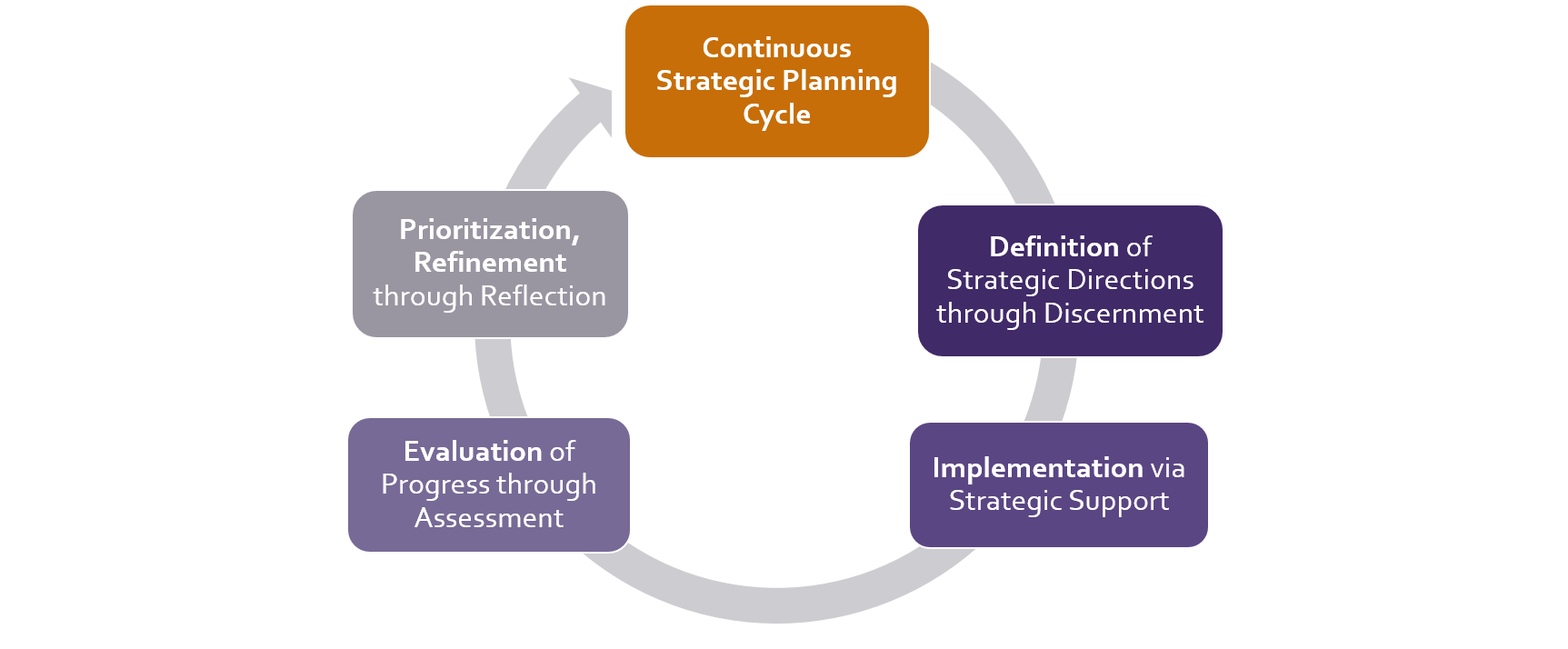Planning & Institutional Effectiveness
The Office of Planning & Institutional Effectiveness leads institutional planning and improvement activities, with a focus on integrating the collection, analysis, and sharing of University data and outcomes to demonstrate how the University is fulfilling its mission and meeting its goals as defined in its Strategic Plan. In addition to coordinating strategic planning processes, the Office provides support for the development and alignment of support plans, and annual progress reporting, including the development of strategic metrics and other performance and outcome measures. In this work, the office shares a collaborative relationship with the Offices of Institutional Reporting and Data Analytics and Educational Assessment, and with other campus partners to facilitate collaborative implementation of the University's integrated Planning and Institutional Effectiveness Model.
The Office manages the University's institutional accreditation with the Middle States Commission on Higher Education, University compliance processes under the Higher Education Opportunity Act (HEOA), and related policy and compliance activities. Planning & Institutional Effectiveness also supports University policy & governance activities
The University of Scranton's Strategic Plan is uniquely focused on building a transformational student learning experience, its creation, implementation, and monitoring of progress and outcomes part of a continuous planning cycle. As guided by our integrated planning model , all University departments, colleges, and divisions develop plans that outline support for these strategic goals, goals for their own growth and improvement, and report progress on planning and evaluative activities. Members of the University community work together to develop and pursue plans for other institution-wide endeavors.







